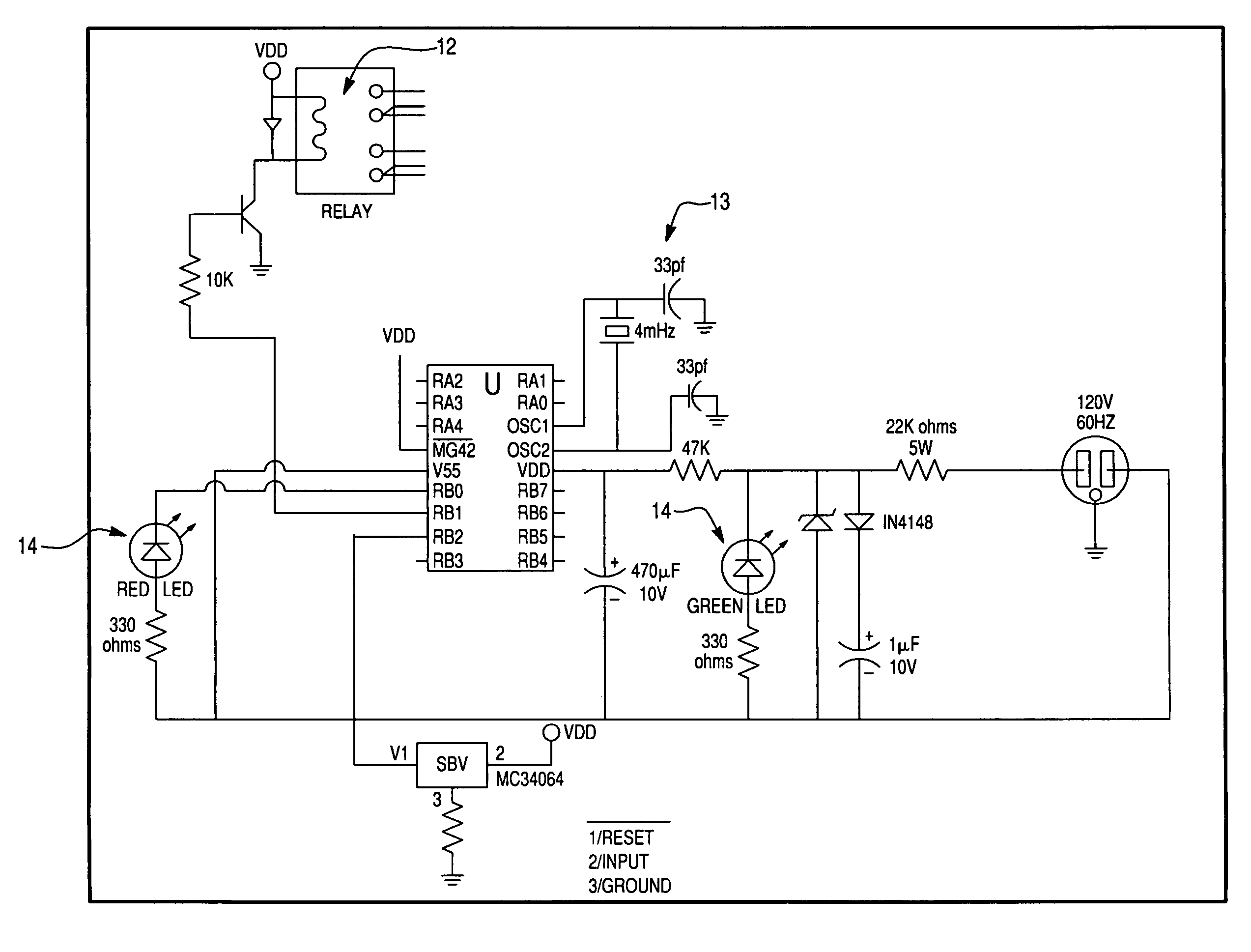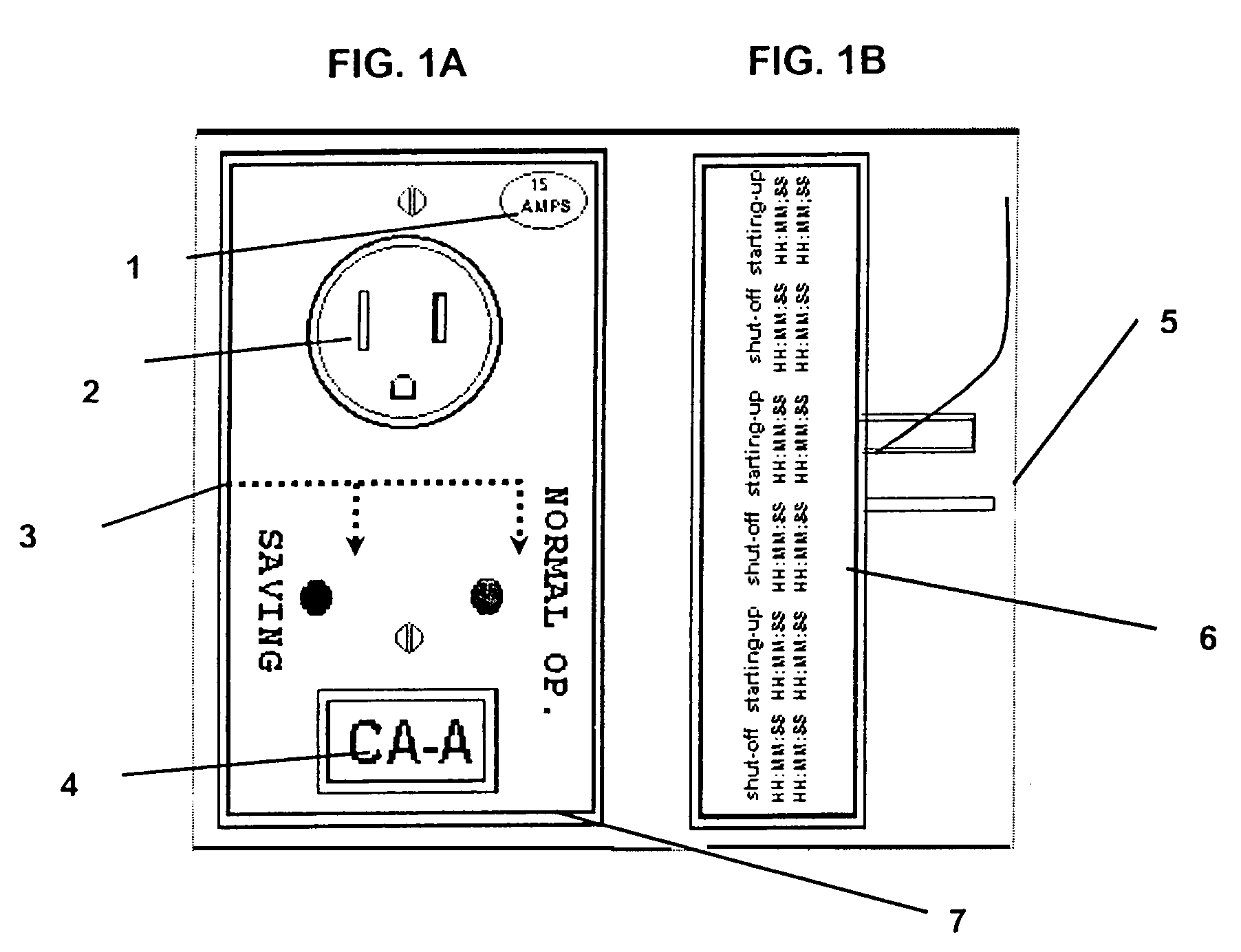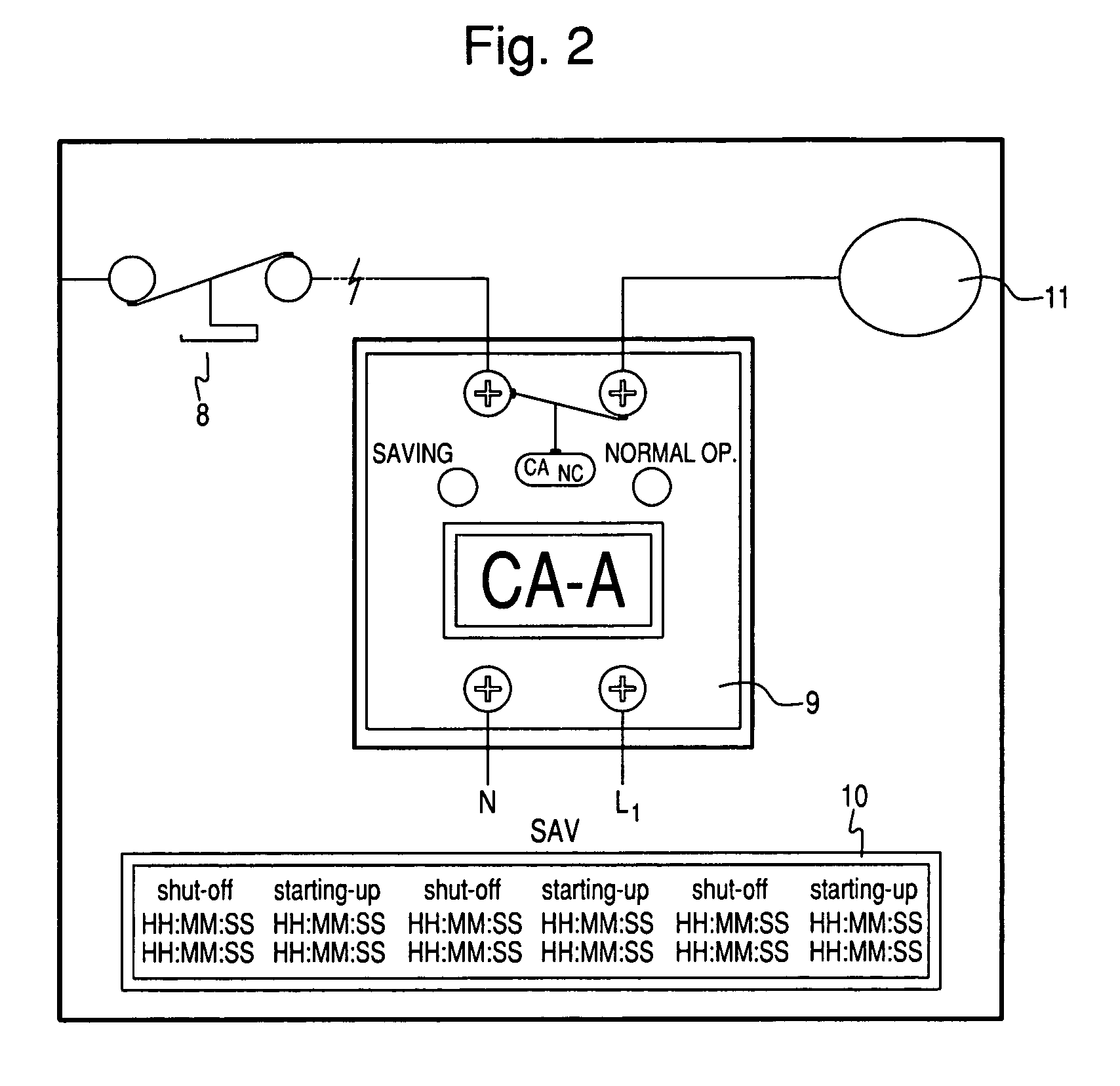Electrical energy saving system
a technology of electric energy saving and energy saving, applied in the direction of position/direction control, ac network voltage adjustment, instruments, etc., can solve the problems of irreversible consequences, reduce the energy demand of consumers, and environmental cost, so as to reduce the electric power consumption, increase the capacity of the plant, and reduce the effect of plant operation
- Summary
- Abstract
- Description
- Claims
- Application Information
AI Technical Summary
Benefits of technology
Problems solved by technology
Method used
Image
Examples
example 1
[0027]FIG. 4 illustrates an example of the programming or scheduling of saving contacts for a given population. The chart includes, on one hand, the groups of saving contacts from A to N that will shut-off the devices (15) connected to it, within the span between 18:00 to 21:30 hours, which is supposed to be the critical period of electric power demand for a population.
[0028]In this example, interruptions in the operation of the equipment for periods of six minutes and fifteen seconds are caused. This shut-off scheduling of the equipment will switch such devices off for enough time so as to have an optimum operation, and at the same time for not affecting their actual operation. It is necessary that the critical hours are detected, so that said programming can be set in order to perform the installation of saving controls in the appropriate electric equipment, to achieve the electric power saving objective.
[0029]For a better identification of the cut-off periods, Table 1 shows the p...
example 2
[0032]Some field tests were carried out to probe the effectiveness of the saving control of this invention and the achievement of the objective of the system.
[0033]The tests were carried out at Fraccionamiento La Sirena, Sinaloa, Mexico, obtaining favorable results for the demand and energy consumption, just as FIG. 7 points out. A profile of the energy consumption behavior (22) was obtained, and the profile obtained with the energy saving controls (23) is also shown. During this exercise, specific saving controls were chosen for this case, and they consisted of the saving controls type A, type B, . . . type F, with shut-off periods of 10 minutes and 15 seconds, every hour starting from 18:00 hours and concluding at 23:00:15 hours (24) as indicated in Table 2.
[0034]During the tests, 124 controls were installed in refrigerators and 54 controls were installed in street lighting lamps, obtaining the results shown in Table 3.
[0035]
TABLE 2SAVINGSSHUT-OFF 1SHUT-OFF 2SHUT-OFF 3SHUT-OFF 4SH...
example 3
[0039]A mathematical model was created assuming that 40,000 street lighting lamps were controlled, and that each lamp generally consumes 0.40 KW. The saving controls of this invention were installed in 60% of the street lighting lamps and the remaining 40% worked normally. The street lighting lamps having no saving control installed, operated during 12 hours (from 18:00 to 6:00 hours), while the street lighting lamps with the saving control installed, were divided into two groups, one operating for 12 hours and the other one operating for 8 hours. In this way, the consumption for the group of street lighting lamps without controller was of 192,000 KWH, while for the group of street lighting lamps with controller operating during 12 hours was only 145,920 KWH, and for the controlled street lighting lamps operating during 8 hours was 30,720 KWH. Therefore, the additional saving obtained when programming a shut-off schedule at 2:00 a.m. in the controlled lamps was 15,360 KWH, as shown ...
PUM
 Login to View More
Login to View More Abstract
Description
Claims
Application Information
 Login to View More
Login to View More - R&D
- Intellectual Property
- Life Sciences
- Materials
- Tech Scout
- Unparalleled Data Quality
- Higher Quality Content
- 60% Fewer Hallucinations
Browse by: Latest US Patents, China's latest patents, Technical Efficacy Thesaurus, Application Domain, Technology Topic, Popular Technical Reports.
© 2025 PatSnap. All rights reserved.Legal|Privacy policy|Modern Slavery Act Transparency Statement|Sitemap|About US| Contact US: help@patsnap.com



